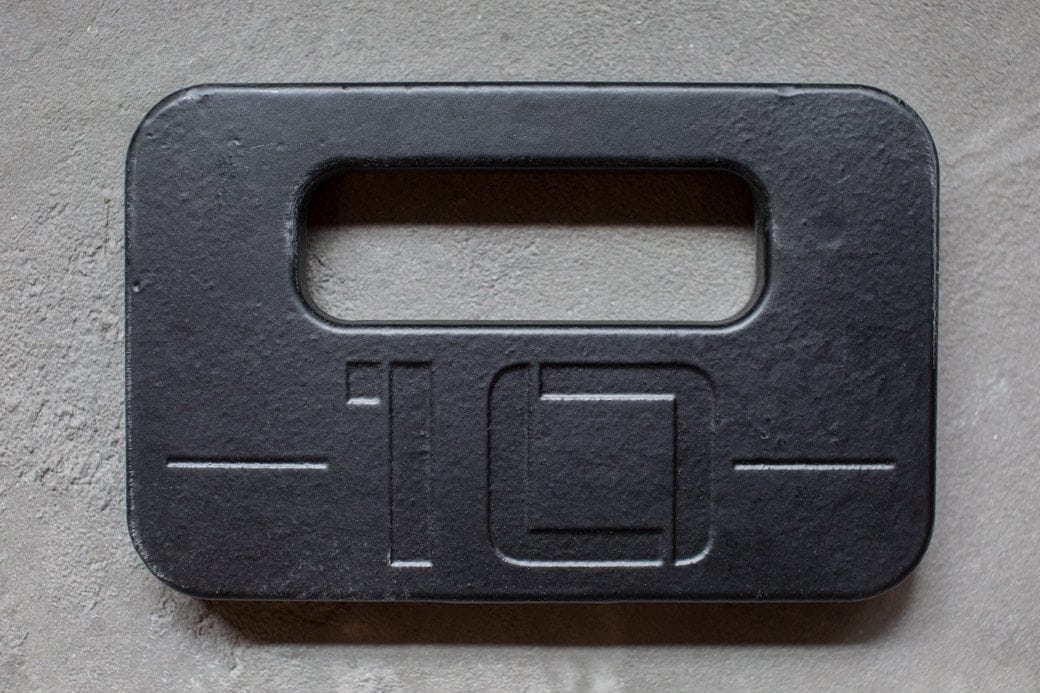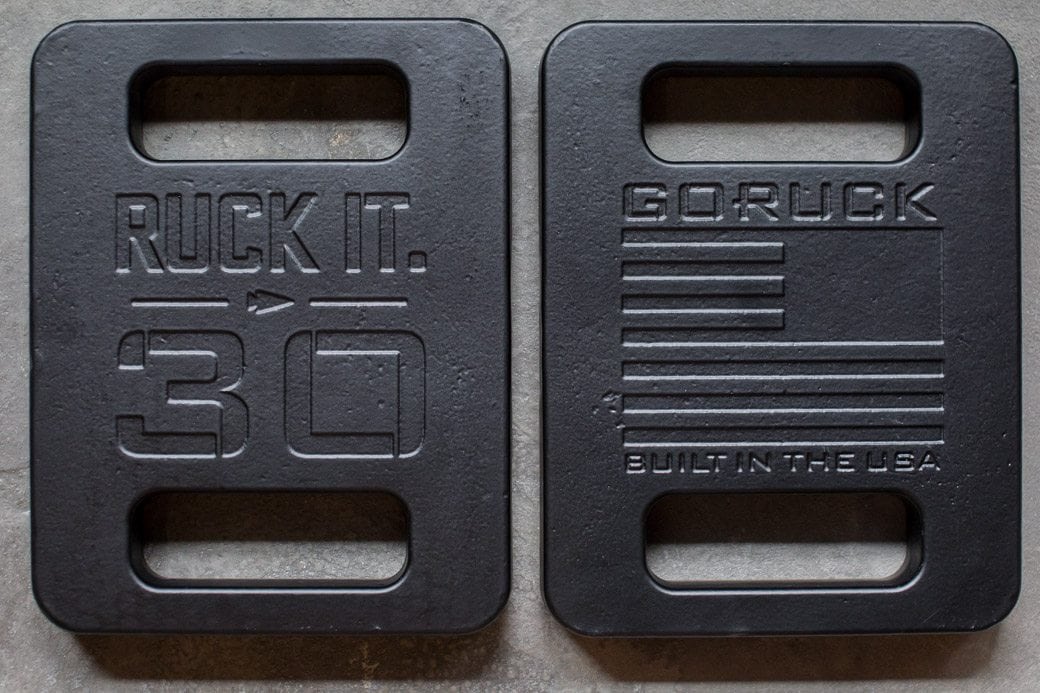
GORUCK has been talking about plates for ages and always hinting that they were going to be released soon. Until now if you wanted a plate for rucking you either needed to buy from SH Plates ($50 – $140), Ruck Weight ($80), or a local metal shop. It should be noted we have nothing but great things to say about SH Plates. Our SH Plate is incredible, we love it to death, and we’ll continue to get custom designed weights from them.

GORUCK just released their cast iron plates in three different sizes: 10 lb ($25), 20 lb ($49), and 30 lb ($65). The 10 lb weight is advertised for an individual who weighs under 150 lbs looking to complete a GORUCK Light event. The 20 lb weight is for someone over 150 lbs doing a GORUCK Light or someone under 150 lbs at a GORUCK Challenge or GORUCK Heavy event. Finally, the 30 lb weight is for individuals over 150 lbs taking on the GORUCK Challenge or GORUCK Heavy.

If visualizations are more your thing you can use the following chart to determine which plate you should use for which event. Just figure out if you weigh less than or equal to/greater than 150 lbs and follow your column down.
| Weight | You Weigh < 150 lbs | You Weigh >= 150 lbs |
|---|---|---|
| 10 lb ($25) | Light | |
| 20 lb ($49) | Challenge/Heavy | Light |
| 30 lb ($65) | Challenge/Heavy |

It definitely seems like GORUCK is trying to win the price game here. The 10 lb weight is a mesely $25, the 20 lb weight comes in at $49, and the 30 lb weight is only $65. If you end up wanting all three weights you can buy them in a bundle for $125, which saves you $14.
Shipping Fees
GORUCK acknowledges that shipping heavy weight is not cheap and has passed that cost on to the consumer in the form of shipping fees. If bought individually each weight carries a $12 fee in addition to the price. If bought in the bundle then there’s a $19 fee applied per bundle. It makes sense to make the items more expensive due to the weight but I’m a little surprised that the cost isn’t baked into the price instead.

The GoRuck plates are actually cast iron, not steel, which contributes to their lower cost. Otherwise, great article from ADR as always! Can’t wait til I get one of these bad boys and free up a ton of space vs my bricks:-)
I can’t believe I screwed that up even after I watched the awesome video on how (and where) these are made. Thank you so much for the correction!